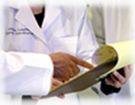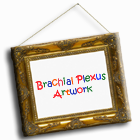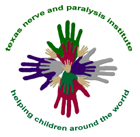|
An Interview with Dr. Nath
Dr. Nath, can you tell us about yourself "Where were you born and raised?" Are you married? Do you have children?
I grew up in Canada, but moved to the U.S. to go to Northwestern University Medical School in Chicago. I have been married for 23 years and have two children. My daughter is 18 and in her first year of university, studying Pre-Law. My son is 15 and is in high school here in Houston; he wants to be a doctor eventually.
When did you realize that you wanted to become a doctor and why?
When I was growing up, I had very bad asthma and was in doctors' offices constantly. I also had surgery as a child and saw how doctors helped people. One time, I had a severe asthma attack and almost died from it; a doctor gave me a shot of adrenaline and cured my symptoms within a minute or so. That ability to completely cure such a major problem has stayed with me as one of the main reasons I wanted to be a physician.
Do you have a mentor?
My grandfather was a judge and a city councilman who was a community leader for many years. He was also a very kind, thoughtful and fair man and has been an inspiration to me. I don't think anyone could ever live up to his standards in my eyes, but I always at least try to follow his principles in my personal and professional life.
What made you want to pursue nerve reconstruction as your specialty?
I always enjoyed neuro-anatomy in medical school. Eventually in our clinical years, I understood that nerve injuries could really be improved through surgery and therapy and that paralysis in many cases could be cured. I really enjoy the diagnosis, planning and microsurgical aspects of nerve reconstruction. Brachial plexus surgery to me is the pinnacle of reconstructive surgery because of the importance of our arms and hands to our quality of life.
Do you consider your approach conservative or aggressive?
I think “conservative” and “aggressive” are really very difficult terms to define. Everything depends on one person's particular perspective and experience. I actually think of myself as quite conservative in surgery and my overall approach to patients. However, if there is a particular problem present and it is becoming worse, I will not hesitate to attempt correction. There are technical challenges to operating on smaller and younger children that make some surgeons wait until the child is older, out of concern for their safety, and I support this. However, I am comfortable working on a child at any age.
What are your goals as a bpi surgeon?
I think that everyone's goals should be nothing less than normalcy. That of course is not always achievable, but I think every attempt should be made to achieve this within the parameters of the family's wishes, and what is safe for the child. Within the past year, I think we are closer than ever before to being able to have a straight arm and a functional arm for the large majority of children.
What made you decide to open up the Texas Nerve & Paralysis Institute after being with the Texas Children's Hospital Brachial Plexus Clinic for so many years?
There are always many reasons for making a move like this. My underlying aim is always to provide the best care for my patients, and I think this will allow that. I have never been comfortable with a "clinic" approach where patients do not know who will be seeing them on a given visit. In my opinion, the doctor-patient relationship is sacred and is best served by having one doctor per patient. I plan to improve the quality of care through research, education, improvements in technology and enhancement of patients' experiences in my institute. I am currently recruiting specialists in various fields as part of an ongoing effort to improve patient services. I will remain the director of the institute because I feel my experience together with my passion will make it the best such facility in the world. I believe in many ways it is already so.
What was the most amazing discovery you have made in working with children and adults with brachial plexus injuries?
In my extensive experiences with patients suffering this injury, I would have to say that the most amazing discovery to me has been the innate capacity of people to rebound spiritually from difficult circumstances. These injuries impact young people in their primes and the effects are therefore magnified. Beyond simply the arm and hand, they impact families and friends and society as a whole. Within this context, I have consistently seen bravery and fortitude among children and adults barely out of their childhood, far beyond what they could be expected to show. This really is the most amazing thing I have ever seen.
Where do you see the future going? What do you envision for a child injured at birth ten years from now?
I believe that we are on the threshold of a new age in treatment of nerve injuries. I think that within 10 years, we will be able to treat brachial plexus and other nerve injuries early on with medicines that will improve the late outcomes and eventual function. One simple example of this is the potential use of agents given immediately after diagnosis of a severe nerve injury to reduce the scar formation that eventually would require surgery. I have already been given a European patent (the American one is pending) for a scar-preventing molecular biology agent that was developed in my lab. This may be available for clinical use in the next 2-3 years. Further down the road would be the engineering of stem cells to recreate damaged nerve and muscle cells. The eventual goal, and an achievable one in our lifetimes, is to make surgery an afterthought in the history books.
|
















